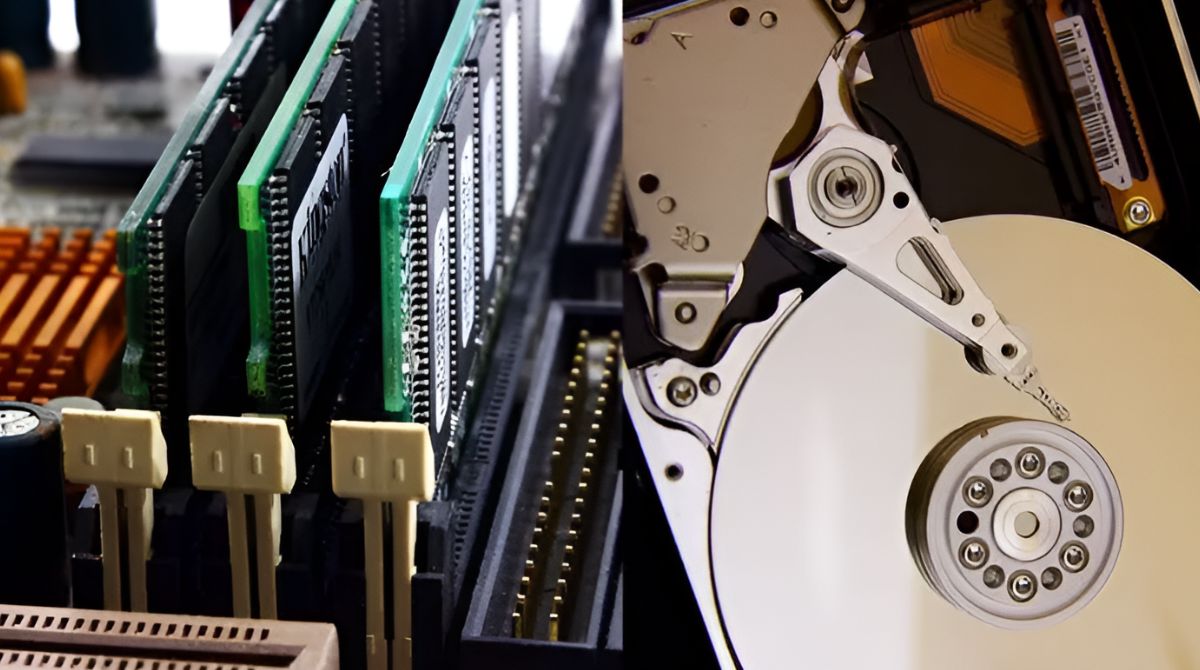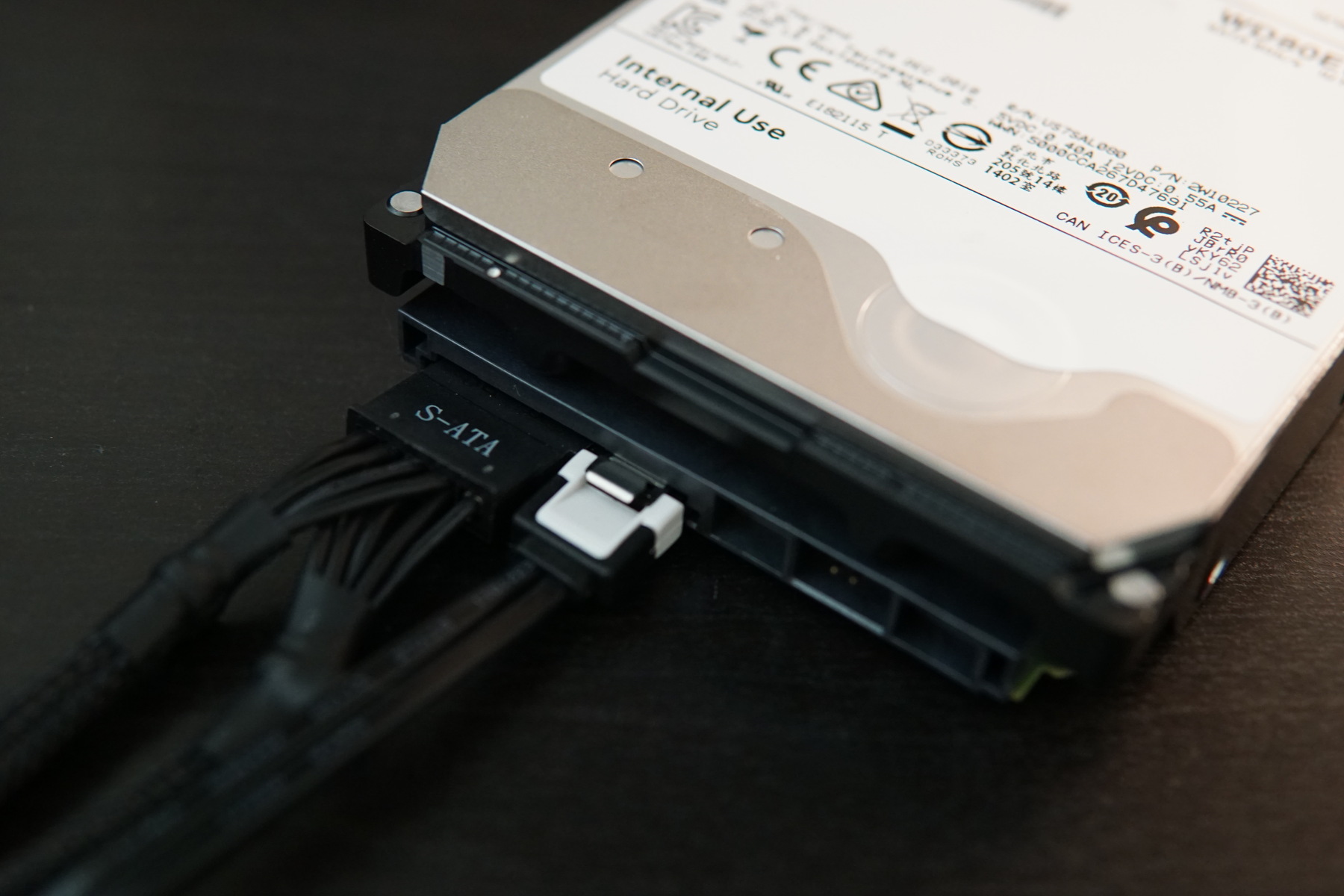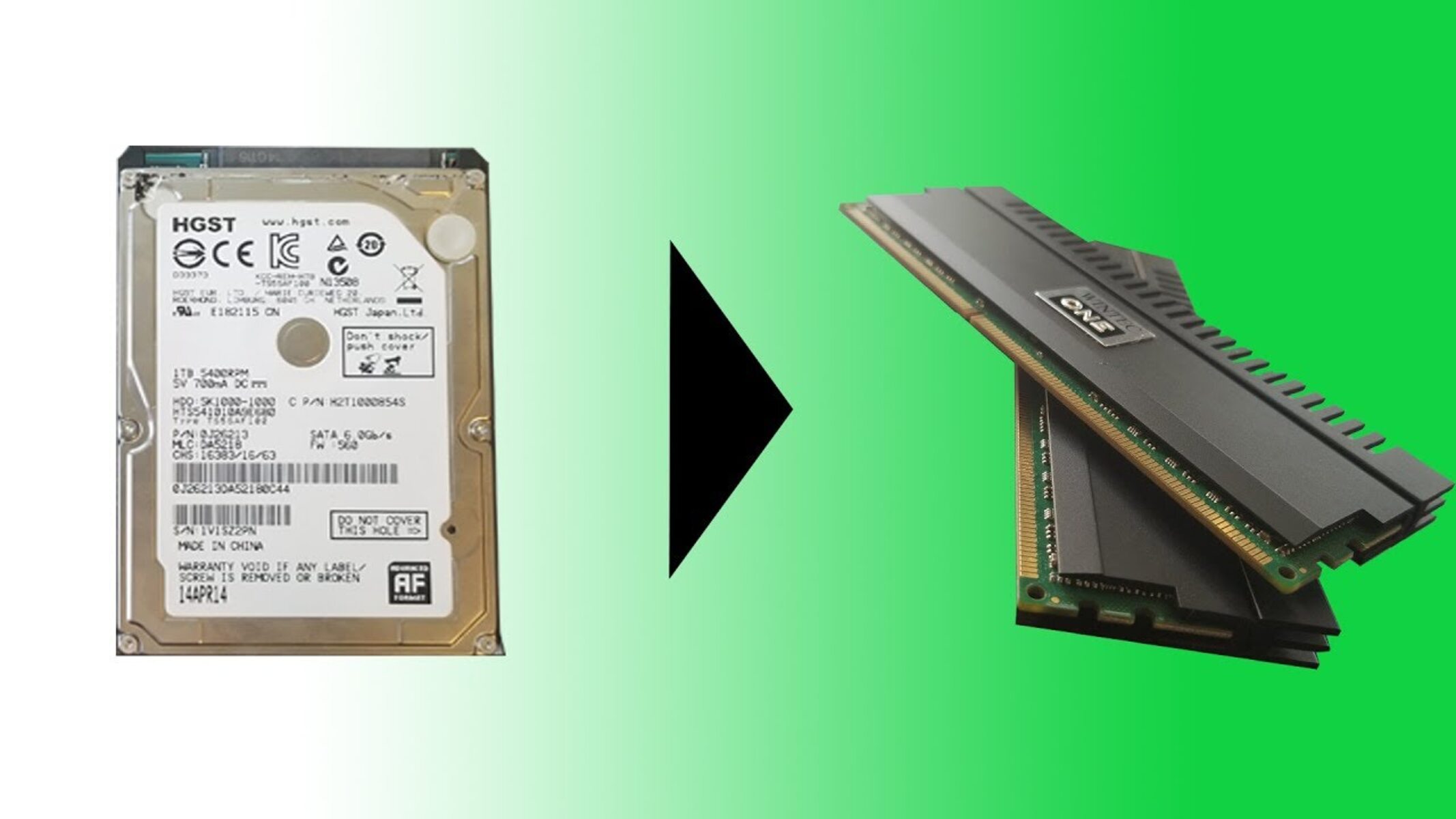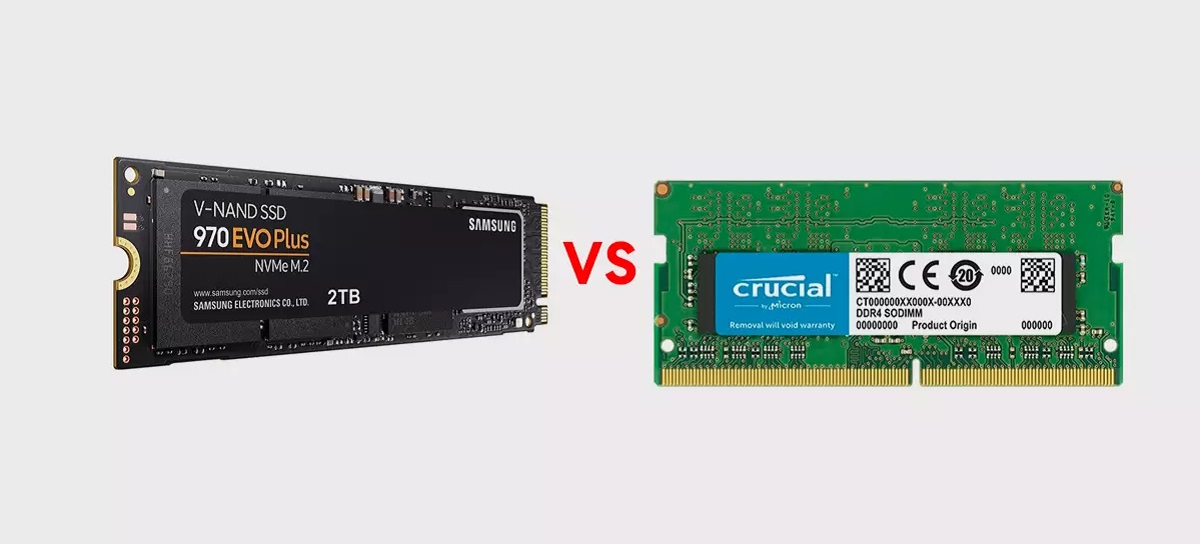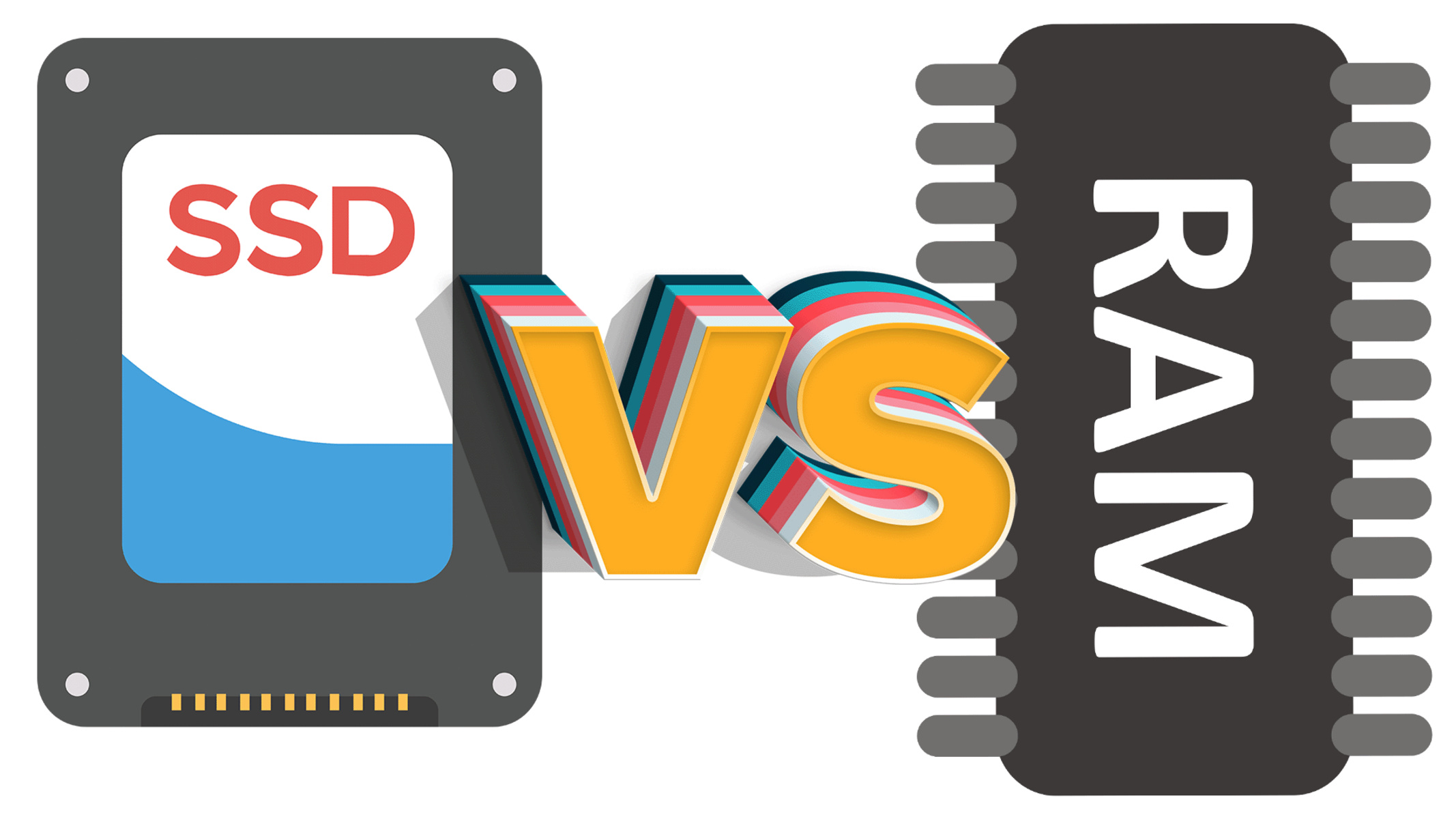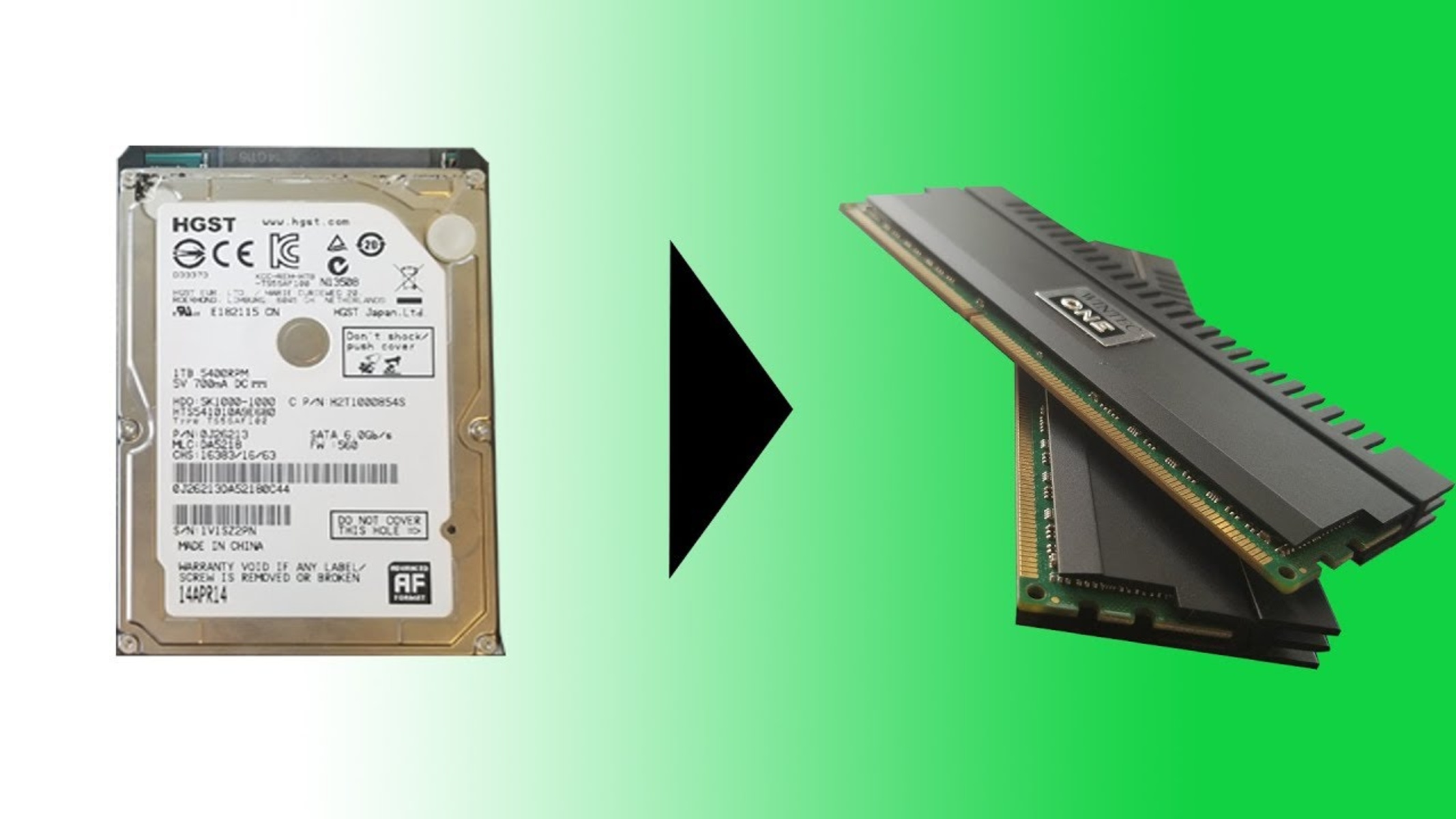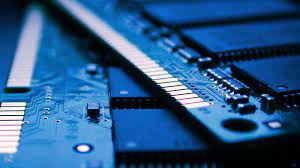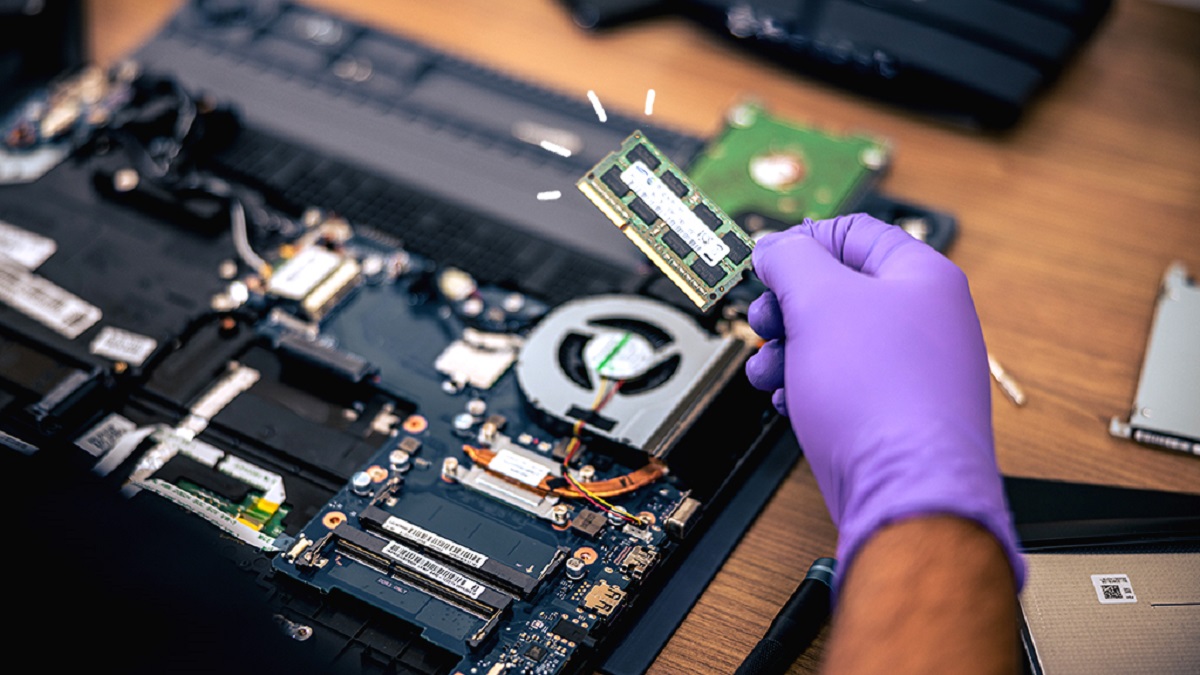Introduction
In today’s technology-driven world, where data plays a vital role in our personal and professional lives, having sufficient memory is essential. When it comes to memory, many people often confuse RAM (Random Access Memory) and hard drive memory, thinking they are the same. However, these two components serve different purposes and play distinct roles in the overall performance of a computer or electronic device.
RAM refers to the temporary memory that stores data that is actively being processed by the computer’s CPU (Central Processing Unit). On the other hand, hard drive memory, also known as storage, refers to the long-term memory where data is permanently stored even when the device is switched off.
In this article, we will delve deeper into the world of RAM and hard drive memory, exploring their differences, importance, and how to strike the right balance between the two. By the end, you will have a better understanding of which memory component holds more significance for your specific needs.
Understanding RAM
RAM, or Random Access Memory, is a type of volatile memory that plays a crucial role in the overall performance of a computer or electronic device. It is a place where data and instructions are stored temporarily while they are being actively processed by the CPU.
Think of RAM as a workspace for your computer. When you open a program or run a task, the data and instructions required for that specific activity are loaded into the RAM. The CPU then accesses this data from RAM to perform computations and execute commands. The amount of RAM available determines how many programs or tasks can be simultaneously handled without causing a decline in performance.
RAM has a direct impact on the speed and responsiveness of your computer. The more RAM you have, the faster your computer can process information, leading to smoother multitasking and quicker application loading times. Insufficient RAM can result in sluggish performance, as the CPU needs to constantly swap data in and out of the limited available memory.
It’s important to note that RAM is volatile memory, meaning that it loses its stored data when the power is turned off. This is why it is essential to save your work frequently and regularly back up important files to a non-volatile storage device, such as a hard drive or an external storage device.
The amount of RAM needed for optimal performance depends on your specific requirements. For light users who mainly use their computers for web browsing, word processing, and basic applications, 4-8 GB of RAM is usually sufficient. However, if you are a power user who frequently runs resource-intensive applications like video editing software or gaming programs, you may need 16 GB or more to ensure smooth and efficient performance.
Upgrading your RAM is one of the most effective ways to boost the performance of an older computer. However, it’s important to ensure that your computer’s hardware and operating system can support the increased RAM capacity before making any upgrades. Checking your motherboard’s specifications and consulting with a computer technician can help you determine the maximum amount of RAM your system can handle.
Understanding Hard Drive Memory
While RAM provides temporary storage for active data, hard drive memory, also known as storage, serves as a long-term repository for files, programs, and the operating system even when the device is powered off. It is where your data is permanently stored, allowing you to access it at any time.
Hard drive memory is typically non-volatile, meaning it retains data even when there is no power supply. This is achieved through the use of magnetic or solid-state technology. Traditional hard drives utilize spinning disks coated with a magnetic surface to store and retrieve data, while solid-state drives (SSDs) use flash memory chips for faster and more reliable performance.
Hard drive memory comes in various capacities, ranging from a few gigabytes to several terabytes. This allows you to store a vast amount of data, including documents, photos, videos, music, and software installations. The size of your hard drive memory directly impacts how much data you can save on your device.
In addition to the capacity, the speed of the hard drive memory also plays a significant role in performance. Traditional hard drives have slower read and write speeds compared to SSDs, which can result in slower boot times, file transfers, and application loading. SSDs, on the other hand, offer faster data access times and improved overall system responsiveness.
The importance of hard drive memory lies in its ability to provide long-term storage for your files and programs. It allows you to keep documents, media, and other data safe and accessible. Additionally, hard drive memory enables the installation and execution of software and operating systems and is essential for maintaining a functioning computer or electronic device.
When considering the appropriate size of your hard drive memory, it is important to assess your storage needs. If you primarily use your device for basic tasks and don’t require a significant amount of storage, a smaller capacity hard drive may suffice. However, if you deal with large files, multimedia projects, or require ample space for software and applications, a larger capacity drive would be more suitable.
Furthermore, it’s worth noting that you can expand your hard drive memory capacity if needed. External hard drives or cloud storage options provide additional ways to store and manage your data. Network-attached storage (NAS) devices allow for centralized storage accessible by multiple devices on a network, making them ideal for households or small businesses with multiple users.
In summary, hard drive memory is essential for long-term storage, allowing you to keep your files safe and accessible even when your device is turned off. The capacity and speed of the hard drive memory directly impact your ability to store and retrieve data efficiently. Assessing your storage needs and considering additional storage options can help you make informed decisions in choosing the right hard drive memory for your specific requirements.
RAM vs Hard Drive Memory: What’s the Difference?
RAM and hard drive memory are two distinct components that serve different purposes in a computer or electronic device. Understanding their differences is essential in determining which aspect holds more importance for your specific needs.
The main difference between RAM and hard drive memory lies in their functionality and purpose. RAM is a volatile memory that provides temporary storage for data actively being processed by the CPU. It acts as a workspace for the computer, allowing for quick access and manipulation of data. On the other hand, hard drive memory is non-volatile and serves as long-term storage for files, programs, and the operating system.
One key distinction is the speed of access. RAM offers much faster data access times compared to hard drive memory. Since it is directly connected to the CPU, data can be retrieved and processed quickly, leading to faster overall system performance. Hard drive memory, although capable of storing larger amounts of data, is comparatively slower due to physical limitations like spinning disks in traditional hard drives or the inherent speed of solid-state drives (SSDs).
Another significant difference is the volatility of data retention. RAM is volatile memory, meaning that its data is lost when the device loses power. This is why it is essential to save your work and backup important files to a non-volatile storage device such as the hard drive memory. Hard drive memory is non-volatile, ensuring that your data remains intact even after the power is turned off.
The capacity of RAM is generally smaller when compared to hard drive memory. RAM is typically measured in gigabytes, while hard drive memory can range from gigabytes to terabytes. This difference in capacity reflects the temporary nature of RAM, storing data that is actively used, while hard drive memory provides ample space for long-term storage.
Both RAM and hard drive memory are crucial for the overall performance and functionality of a computer or electronic device. While RAM ensures quick data access and efficient multitasking, hard drive memory ensures the safe storage of files and programs.
In summary, RAM and hard drive memory have distinct roles in a device’s operation. RAM provides temporary storage and quick data access, while hard drive memory offers long-term storage for files and programs. Both components are essential and work together to ensure optimal performance and functionality.
The Importance of RAM
RAM, or Random Access Memory, is a crucial component in any computer or electronic device, playing a vital role in its overall performance. Here are several reasons why RAM holds great importance:
- Speed and Responsiveness: RAM directly influences the speed and responsiveness of your device. The more RAM you have, the faster your computer can access and retrieve data, resulting in smoother multitasking, quicker application loading times, and improved overall system performance.
- Enhanced Multitasking: With larger amounts of RAM, you can run multiple applications simultaneously without encountering lag or performance issues. This is particularly important for power users who work with resource-intensive programs such as video editing software, graphic design tools, or virtual machines.
- Efficient Program Execution: When you open a program, its data and instructions are loaded into the RAM, allowing the CPU to quickly access and process the information. Insufficient RAM can lead to slow program execution, as the CPU needs to continuously swap data between RAM and the slower hard drive memory.
- Improved Gaming Experience: RAM plays a crucial role in gaming performance. Games often require significant amounts of memory to load and store data during gameplay. Higher RAM capacity can help reduce lag, prevent stuttering, and provide a smoother gaming experience.
- Futureproofing: As technology advances and software becomes more demanding, having ample RAM ensures that your device can handle future updates and newer software versions without experiencing performance bottlenecks. It allows for better compatibility and longevity of your system.
- Virtualization and Resource Intensive Tasks: If you engage in virtualization or resource-intensive tasks such as running multiple virtual machines or complex simulations, having a higher amount of RAM is essential. It provides the necessary memory resources to support these demanding activities effectively.
It’s important to note that the importance of RAM varies depending on your specific needs and usage patterns. While a casual user who primarily engages in web browsing and basic office tasks may find 8GB of RAM sufficient, power users, gamers, and professionals working with multimedia or engineering software may require 16GB or more to ensure optimal performance.
Upgrading your RAM is an effective way to improve the performance of an older computer or to meet the requirements of newer software and applications. However, it’s essential to ensure that your computer’s hardware and operating system can support the increased RAM capacity before making any upgrades. Consulting with a computer technician or referring to your device’s specifications can help determine the maximum amount of RAM your system can handle.
The Importance of Hard Drive Memory
Hard drive memory, also known as storage, is an essential component of any computer or electronic device. It serves as a long-term repository for files, programs, and the operating system. Here are several reasons why hard drive memory holds great importance:
- Storage Capacity: Hard drive memory provides the necessary space to store your files, documents, photos, videos, music, and software installations. The capacity of your hard drive memory determines how much data you can store on your device. With larger storage capacity, you can keep a vast amount of data readily accessible at any time.
- Data Preservation: Unlike volatile memory such as RAM, hard drive memory retains data even when the device is powered off. This ensures the safety and preservation of your files, preventing the loss of important data due to unexpected power loss or system crashes.
- Operating System and Software: Hard drive memory allows for the installation and execution of the operating system and software applications. It provides the necessary space to store program files, configurations, and libraries required for the smooth running of your device.
- Accessibility and Convenience: With hard drive memory, you have the convenience of accessing your files and programs at any time, even when offline. It allows you to create folders, organize your data, and browse through your files effortlessly.
- Data Backup: Hard drive memory provides an ideal location for backing up your important files and documents. Regularly backing up your data to an external hard drive, network-attached storage (NAS), or cloud storage ensures that your information remains safe in the event of a hardware failure or data loss.
- Flexibility and Portability: With external hard drives and portable SSDs, you can expand your storage capacity and easily transfer files between different devices. This flexibility allows you to carry your data with you and access it on multiple computers or devices.
The importance of hard drive memory depends on your storage needs and usage patterns. If you primarily engage in basic tasks such as web browsing, document editing, and casual multimedia consumption, a smaller capacity hard drive may be sufficient. However, if you work with large files, multimedia projects, or require ample space for software installations, a larger capacity drive would be more suitable.
It’s also worth noting the importance of data management and organization when it comes to hard drive memory. Regularly cleaning up unnecessary files, organizing data into folders, and utilizing file compression techniques can help optimize storage space and improve overall system performance.
In summary, hard drive memory plays a significant role in storing and preserving your data, allowing for the installation and execution of software, and providing accessibility and convenience in accessing your files. Understanding your storage needs and implementing proper data management practices can help ensure the effective use of hard drive memory for your specific requirements.
Balancing RAM and Hard Drive Memory
When it comes to optimizing the performance of your computer or electronic device, finding the right balance between RAM and hard drive memory is crucial. Here are several factors to consider when balancing these two components:
- Usage Patterns: Assess how you use your device on a regular basis. If you engage in resource-intensive tasks such as video editing, gaming, or running virtual machines, investing in more RAM can significantly improve performance. However, if your usage is primarily focused on basic tasks like web browsing, word processing, and multimedia consumption, a larger hard drive memory may be more beneficial for storing your files and programs.
- Multitasking Requirements: Consider the number and complexity of tasks you typically run simultaneously. If you find yourself frequently switching between multiple applications and require smooth multitasking, allocating more RAM can ensure that each program has enough memory to operate efficiently. On the other hand, if you tend to focus on one task at a time, a larger hard drive memory may provide ample space for storing your files and programs.
- Budget: Both RAM and hard drive memory upgrades come at a cost. Carefully assess your budget and determine which component will provide the most significant impact on your overall device performance. If you have limited funds, prioritize the component that aligns with your usage patterns and specific needs.
- Compatibility: Ensure that your device’s hardware and operating system are compatible with your desired RAM and hard drive upgrades. Check the maximum supported RAM capacity and the type of RAM your system requires. Similarly, verify the interface (SATA, NVMe, etc.) and form factor (2.5-inch, M.2, etc.) supported by your motherboard or device for hard drive memory upgrades.
- Hybrid Storage Options: Consider utilizing hybrid storage solutions that combine the benefits of both RAM and hard drive memory. For example, you can opt for solid-state hybrid drives (SSHDs), which incorporate a small amount of high-speed NAND flash memory alongside traditional spinning disks. This combination allows for faster access to frequently used files and programs while providing the larger storage capacity of traditional hard drives.
- Future Expansion: Lastly, consider your future needs. If you anticipate increasing demands on your device due to evolving software or new projects, investing in more RAM or a larger hard drive memory from the start can provide futureproofing. This can help avoid the need for frequent upgrades and offer seamless performance as your requirements grow.
Ultimately, finding the right balance between RAM and hard drive memory depends on your specific needs, usage patterns, and budget. Assessing these factors and considering future expansion can help guide you in making informed decisions when upgrading or purchasing a new device.
Factors to Consider When Choosing RAM
Choosing the right RAM (Random Access Memory) for your computer or electronic device is essential for optimal performance. Here are several factors to consider when selecting RAM:
- Memory Capacity: Determine the amount of RAM you need based on your specific requirements. Light users who primarily engage in web browsing, word processing, and basic applications can typically get by with 4-8GB of RAM. Power users, gamers, and professionals working with resource-intensive applications may require 16GB or more to ensure smooth performance.
- Compatibility: Ensure that the RAM you choose is compatible with your device’s hardware and operating system. Check the type (DDR3, DDR4, etc.), speed, and voltage requirements specified by your motherboard or device documentation. Mismatched RAM can result in compatibility issues and suboptimal performance.
- Operating System Requirements: Different operating systems have different RAM requirements. Determine the recommended RAM specifications for your operating system, as exceeding the minimum requirements often leads to better performance. Additionally, consider any specialized software you may use that has specific RAM recommendations.
- RAM Speed: RAM speed, measured in MHz (megahertz), affects the data transfer rate between RAM and the CPU. Higher RAM speeds generally result in faster performance. However, it’s important to note that the actual benefit may vary depending on the specific tasks and applications you use. Consult your motherboard documentation to determine the maximum supported RAM speed.
- Single or Dual Channel Configuration: Check whether your motherboard supports single or dual-channel memory configurations. Dual-channel configurations offer increased bandwidth and improved memory performance. If your motherboard supports dual-channel memory, consider purchasing RAM modules in pairs to take advantage of this feature.
- Overclocking Potential: If you are interested in overclocking your system to extract additional performance, look for RAM modules that have better overclocking capabilities. These RAM modules are typically designed with higher-quality components and may have XMP (Extreme Memory Profile) support for easier and more stable overclocking.
- Brand and Quality: Choose reputable brands known for producing high-quality RAM modules. Reliable manufacturers often offer better warranty coverage and support. Reading reviews and considering recommendations can help you identify trusted brands in the market.
- Cost: RAM prices can vary depending on factors such as capacity, speed, and brand. Set a budget and consider the cost-effectiveness of different RAM options. It’s essential to strike a balance between your budget and the performance gains you will achieve.
By carefully considering these factors, you can make an informed decision when choosing the right RAM for your computer or electronic device. Remember to consult your device documentation, seek technical guidance if needed, and ensure compatibility before making any purchases.
Factors to Consider When Choosing Hard Drive Memory
When selecting hard drive memory, also known as storage, for your computer or electronic device, several factors should be taken into consideration. These factors will help determine the most suitable hard drive memory for your specific needs:
- Storage Capacity: Determine the amount of storage space you require. Consider the types of files you will store, such as documents, photos, videos, and software installations. If you work with large media files or need to store extensive software libraries, opt for a larger capacity hard drive memory to ensure ample space.
- Hard Drive Type: Choose between traditional hard disk drives (HDDs) or solid-state drives (SSDs). HDDs are typically more cost-effective and provide larger storage capacities. SSDs offer faster access times, improved performance, and increased durability. Consider the speed and performance requirements of your device to determine which type is best suited for your needs.
- Read and Write Speeds: If speed is a crucial factor for your storage needs, consider the read and write speeds of the hard drive memory. SSDs generally have faster data transfer rates than HDDs, resulting in quicker file access and faster boot times. Higher read and write speeds are beneficial for tasks that involve intensive file processing, such as video editing or running resource-intensive applications.
- Form Factor: Ensure that the hard drive memory you choose is compatible with your device’s form factor. Common form factors include 2.5-inch, 3.5-inch, and M.2 drives. Check the specifications of your device or consult the manufacturer’s documentation to verify the supported hard drive form factor.
- Interface: Pay attention to the interface supported by your device, such as SATA (Serial ATA) or NVMe (Non-Volatile Memory Express). SATA is commonly found in traditional HDDs and some SSDs, while NVMe offers higher speeds and is suitable for high-performance storage devices. Ensure that the chosen hard drive memory is compatible with the interface supported by your motherboard or device.
- Budget: Consider your budget when selecting hard drive memory. SSDs typically cost more per gigabyte compared to HDDs. Assess the trade-offs between cost and performance to determine the most suitable option for your needs.
- Reliability and Warranty: Research the reliability and warranty period of the hard drive brand or model you are considering. Look for reputable manufacturers that offer reliable and durable storage options. Longer warranty periods often provide added peace of mind and protection against potential hardware failures or defects.
- Additional Features: Some hard drive memory may include additional features such as hardware encryption, vibration resistance, or power efficiency. Consider these features if they align with your specific requirements or preferences.
By carefully considering these factors, you can select the most appropriate hard drive memory to meet your storage needs while balancing performance, cost, and compatibility. It’s recommended to research and compare different products, read reviews, and consult with experts if necessary to make an informed decision.
Conclusion
Choosing the right balance between RAM and hard drive memory is crucial in optimizing the performance and functionality of your computer or electronic device. While RAM facilitates quick data access and enhances multitasking capabilities, hard drive memory provides the necessary space for long-term storage of files, programs, and the operating system.
Consider your specific needs, usage patterns, and budget when selecting the appropriate RAM and hard drive memory. Assess factors such as memory capacity, compatibility with your device, read and write speeds, form factor, interface, and additional features. Research reputable brands and consider reviews and recommendations to ensure reliability and quality.
For optimal performance, aim to strike a balance between RAM and hard drive memory that aligns with your requirements. Power users, gamers, and professionals engaging in resource-intensive tasks may prioritize larger RAM capacities for smoother multitasking and improved performance. Light users focused on basic tasks may opt for larger hard drive memory capacities to store files and programs.
It’s crucial to remember that both RAM and hard drive memory are vital components that work together to ensure optimal performance. Upgrading or selecting the appropriate components based on your specific needs will enhance the overall efficiency and user experience of your computer or electronic device.
Regularly assess your storage needs, consider future expansion, and adapt as your requirements change. Upgrading RAM or hard drive memory can breathe new life into older systems, while careful selection can optimize the performance of newer devices. Prioritize compatibility, quality, and budget when making decisions to ensure the best results.
By considering these key factors and making informed choices, you can strike the right balance between RAM and hard drive memory and unlock the full potential of your computer or electronic device.







